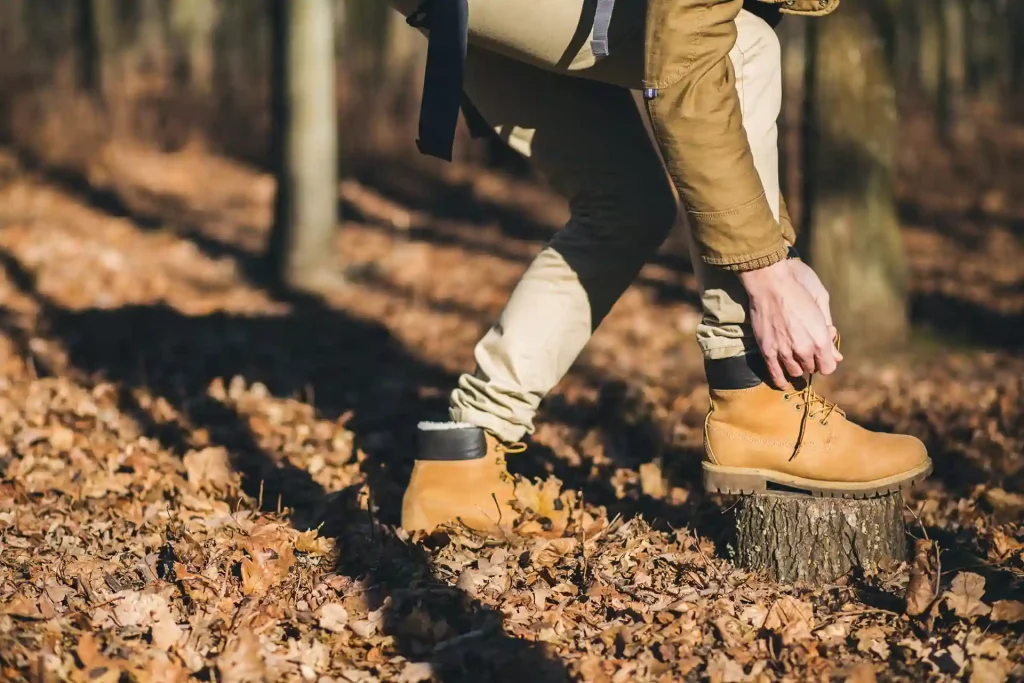Buying an all-weather boot is complicated as you need to be concerned about how the weather changes from time to time. All-weather boots should provide multiple features that match the weather changes, style, and fashion. If you are facing trouble with buying an all-weather boot, here are our simple tips that you can follow through with and may be able to find the perfect all-weather boots for yourself.
Let’s get started.
Before buying an all-weather boot, it’s important to know what all-weather boots are.
All-weather boots are usually made of waterproof materials and are perfect for the wet, windy days of cool spring nights. They can offer you protection from snow, rain and sleet as well as other mild weather. Spending a little more may be worth it in the long run if you have to walk through a lot of wet conditions each day.
Before getting started, let’s have a look at some features of all-weather boots:
- Thick, multilayered soles that insulate from the ground
- Warm lining, padding which provides inner insulation
- Waterproofing
- Non-porous materials that provide wind/air resistance
- Better sole traction
- Upper-ankle height or greater
- Leather exterior
- Simple upper/vamp design that is similar to dress shoes
Contents
List of Things to Consider Buying an All-Weather Boot

1. Boots Material:
Boots material is a fundamental element that must be looked up while buying your perfect all-weather boots. The material that covers the top of your foot (frequently known as the upper section) has to be both durable and waterproof, which provides enough protection even if in bad weather conditions. Nylon or leather materials should be perfect but make sure they are waterproof and offer a heavy-duty feature.
2. Waterproofing:
Legend says, “Dry feet means warm feet”. The major concern of buying all-weather boots is not to wet your feet due to bad weather conditions as well as keep your feet warm enough. Once your feet are getting wet in the absence of waterproofing, you start feeling cold, and that isn’t a good thing. When buying your perfect all-weather boots, you need to ensure the boots are entirely waterproof and maintain the dryness of your feet.
3. insulation:
Proper insulation is the key to preserving the temperature of your feet and keeping them warm in any condition. Appropriate insulation facilitates to preserve the body heat as well as letting the moisture of the feet to escape at the same time. Non-synthetic materials like wool deliver enough insulation and temperature control. You can also prefer synthetic materials like thinsulate which similarly offer enough protection in wet and cold conditions.
4. sizing and Fit:
Size of boots can be related with the comfiest of wearing. If you are unable to find the right size of boots for yourself, you may not enjoy all the benefits of wearing all-weather boots. You must be careful about the size of your boots since there should be enough space to fit the thicker socks as well as to escape the moisture of your feet to keep them dry.
5. Boots Height:
Boot height can vary according to your choice and preference, but the thing you should remember is that the higher the boot height, the more insulation and temperature control you have. So, if you want additional insulation and cosiness, you should choose boots with a larger height.
6. Rubber Sole:
Rubber sole prevents the transmission of water from the ground and get your feet wet. In the days of weather changes, where you want some grip on the ground and not to skid on your every footstep, rubber sole is the best solution for you. Leather sole can’t provide you much grip in this case though they are durable and comfy.
7. functional Closures:
If you want additional insulation and cosiness while buying all-weather boots, you should choose lace-up boots rather than pull-on zipper-style boots. Lace-up boots offer a close-fitting element as well as much control over traction. You may also consider the boots with a gusseted tongue, which delivers extra protection.
The 3 Ultimate Rules About Buying an All-Weather Boots:
- While buying the perfect all-weather boots for yourself, it is recommended that you should try on both right and left boots. You need to ensure that you are feeling comfortable with the boots on both your feet.
- Try on the new boots with your preferable socks type (thicker socks/thinner socks) for the best fit.
- Have a trial with your new boots. You should take a little walk to make sure the easeful of new boots.





